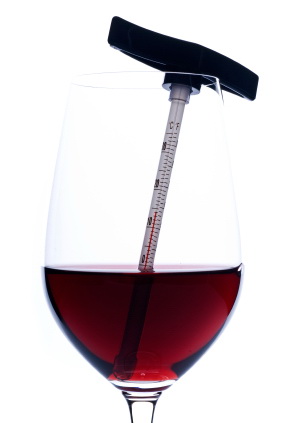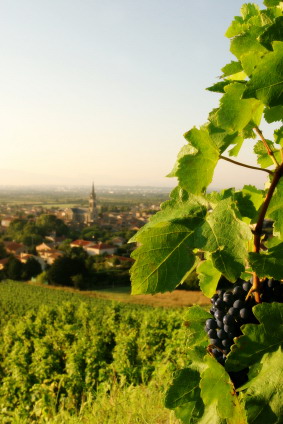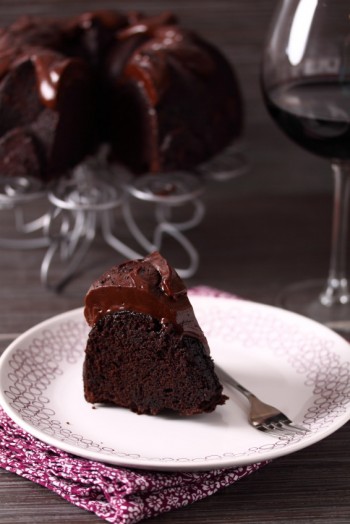 Continued from Part 3 of High Alcohol Wine …
Continued from Part 3 of High Alcohol Wine …
This is legal in some regions, especially in cool climates where the grapes don’t fully ripen, but not in others. Some critics liken feeding more sugar to yeast cells to force-feeding geese to make foie gras.
Even the yeasts themselves are changing. Ten years ago, most natural yeasts produced 13.2 percent alcohol from grapes harvested with 24 brix.
However, modern cultured strains can convert that same sugar into 14.8 percent. These Godzilla yeasts can also survive high-alcohol environments of 16 percent or more, which kill natural yeasts.
The fermentation vessel is changing too. In the 1970s, open fermenters always lost some alcohol due to evaporation. Today’s closed steel fermenters avoid that leakage, and result in a degree or two more alcohol.
(Here are my top reviews of wines between 15 and 17% alcohol.)
During fermentation, some producers concentrate the grape must further by draining water from it. Some say this is a necessity, especially after a wet harvest, when grapes are bloated with rain.
Others condemn it as a lazy fix for vintners who over-crop their vines and then try to force concentration into the wine. However, the practice seems well entrenched. It’s estimated there are more than 2,000 vacuum concentrators in Bordeaux alone, including those at some of the most august châteaux.
The post-fermentation aging phase can also increase alcohol: some water always evaporates out of the wooden barrels, further concentrating the wine by as much as a percent. Wines bottled immediately after fermentation don’t have this issue.
The problem is that all these technologies and techniques are becoming standard procedures, rather than used occasionally to correct technical or climactic problems.
Oenology programs, such as the one at the University of California at Davis, have been blamed for training winemakers to create technologically “optimized” wines.
By this time, I’m on my fifty-first zinfandel and starting to feel thoroughly optimized myself. Maybe marathon tasting isn’t so bad after all.
Perhaps wine tasters are like runners: eventually the endorphins kick in, you break through the pain barrier and just go with the momentum. That seems to be the case for most of my colleagues.
The chatter in the room is cheerful and loud, and their pink faces radiate goodwill. A flowering tenderness floods me with love for all these BEAUTIFUL people.
Still, there’s no denying that these wines are punishing. Like so many today, they’re both alcoholic and oaky. These “termite specials” club your palate until it’s numb, assaulting you with flavors and tannins that haven’t yet smoothed out.
If the death of elegance had a taste, this would be it.
You might argue that vintners aren’t creating these styles in a vacuum, rather they’re responding to consumer demand. That demand, in turn, is driven by critics’ ratings, particularly those of Robert Parker.
Winemakers who craft their wines to his apparent taste for denser, darker, alcoholic wines are said to “Parkerize” them. Competition medals have a similar effect in Australia, where they have more than forty wine shows a year. There too, high scores reward big wines that taste good by themselves, without food.
Some vintners claim Parker’s reviews just reflect the ratcheting up of our entire sensory environment: bigger explosions in the movies, more violent television programs, saltier meals and bigger wines. The special effects have obliterated the plot.
Why is big now considered better? Have we all turned into shock jocks when it comes to wine? Are even the grand old wines in danger of becoming caricatures of themselves, the way aging comics awkwardly insert hip lingo into their routines?
These are all questions I ponder as I move on to the next table. It groans under the weight of seventy-two Chilean cabernets, making me wonder whether there should be breathalyzers at wine tastings.
It strikes me that we’ve confused power with concentration, strength with quality.
That’s why some drinkers now believe that a wine can’t possibly be “serious” without big body and high alcohol, just as some people believe that a novel of fewer than 200 pages can’t be great literature.
 Most of us don’t want to eat food that’s so hot that it hurts or a dish with just one dominant flavor. So why do we want our wine to taste that way?
Most of us don’t want to eat food that’s so hot that it hurts or a dish with just one dominant flavor. So why do we want our wine to taste that way?
Big wine obliterates the taste of whatever it accompanies, much like dousing everything you eat with ketchup or salt. “These wines don’t complement food,” Californian vintner Paul Ridge observes. “Except maybe wild boar, preferably still alive.”
In 2002, Australian scientists H. Guth and A. Sies proved that when the alcohol gets high enough it obscures wine’s character.
The study focused on gewürztraminers and Bordeaux reds, and found that excessive alcohol covers the flavor compounds that distinguish wines. Most tasters in the study couldn’t identify the wine type.
It’s not that I won’t drink alcoholic wines, but sparingly, just as I don’t eat chocolate cake for dessert every night.
Acidity alone gives us that refreshing sensation, cleansing the palate so that each bite of food approaches the deliciousness of the first one. That’s great dining: not quick satiety, but prolonged pleasure.
Acidity is also the primary element that enables wines to age. Hence the debate about whether some New World chardonnays and cabernets can age well because they often don’t have enough acidity to balance their other components. I’ve tasted some from the best vineyards in California, Australia and Chile, and after just five years, they seem faded.
Californian oenologist George Vierra divides wines into “social wines,” consumed on their own and “table wines,” which are partners for food. I, too, like different styles of wine for different purposes.
For an aperitif, I prefer a richer, rounder style that doesn’t make me pucker. Alcohol of about 13 percent is perfect because I’m asking my wine to be a cocktail. With food, I want the wine to be more acidic, less alcoholic so I can taste the flavors in the dish.
It’s like the difference between attending a concert and …
Continue to Part 4 of High Alcohol Wine







